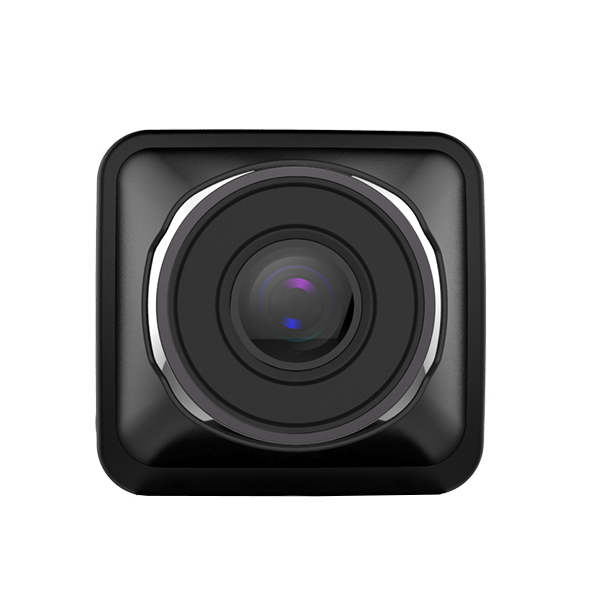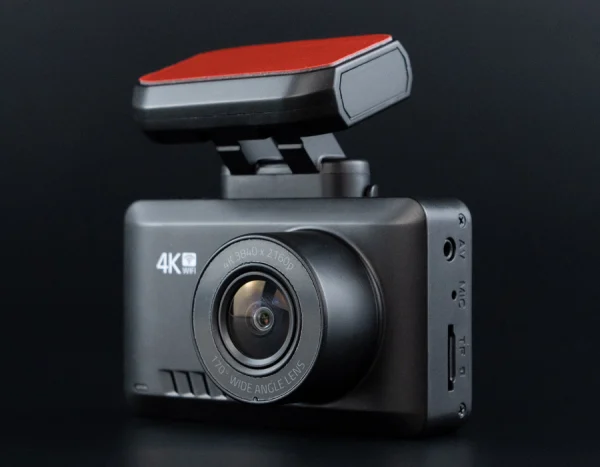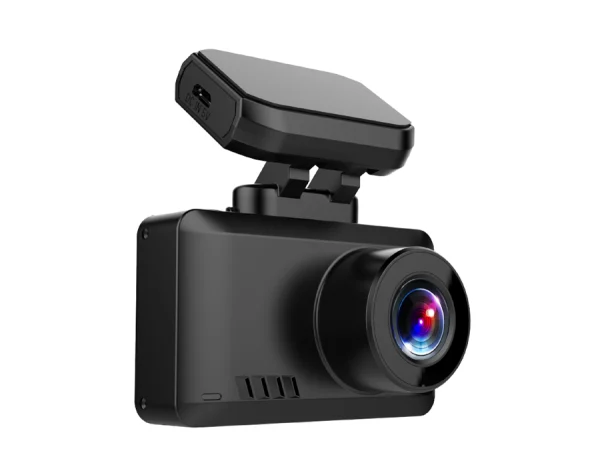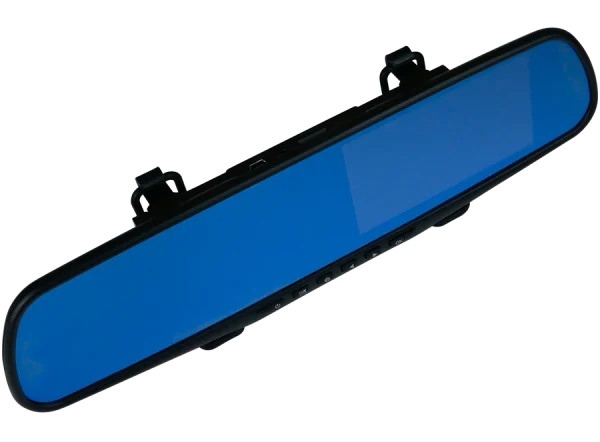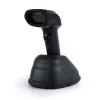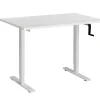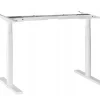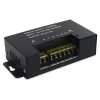- Home
- Car cameras
Car cameras
Car cameras, also known as dashcams, are high-quality devices used for recording the course of a vehicle's journey. They are characterized by their small size and are ideal for use in both private and commercial vehicles. These compact devices are very useful in emergency situations as they can provide evidence to determine fault. Each car dashcam offers different features depending on the budget and needs and can be installed in various vehicles, including passenger cars, trucks, and even buses.
=LONG= Road Safety with Car Cameras
With the development of automotive technology over the years, the number of vehicles on the roads is increasing, leading to a higher risk of collisions and accidents. As drivers, we are exposed to various road incidents involving other road users on a daily basis. Driving along our route, we encounter not only other drivers but also motorcyclists, cyclists, and pedestrians. Such a large number of potential interactions brings the possibility of unpleasant and often disputed situations. It happens that determining the culprit during a collision is not always easy and obvious, especially if there were no eyewitnesses. In such situations, a car camera, also known as a dashcam, comes to the rescue. Employees spend an average of 8 hours a day at work, so their comfort and work environment are crucial. Technological advancements offer increasing opportunities to improve the comfort of employees, which translates into the efficiency and productivity of their work. There is yet another, most important factor that speaks for considering the topic of ergonomics at work - health reasons. Over the years, many studies have been conducted on how prolonged work at a computer in a certain position can negatively affect the health and well-being of our employees. Therefore, it is worth paying attention to whether the workstations in our company are ergonomic. Various solutions are available to enhance comfort.

What is the purpose of a car camera
A car dashcam is used to record the vehicle's journey. It is mounted on the front windshield using strong adhesive tape or a special suction cup and records all events on the road. Thus, in the event of a collision or road incident, the driver has evidence to help resolve disputed issues. Some car camera models, in addition to the front camera, also offer a rear camera, allowing recording not only of the route ahead but also capturing what happens behind the vehicle. Car cameras are characterized by compact, small size, which does not limit visibility while driving. They significantly enhance safety and have a range of useful features. Additionally, their operation is intuitive and straightforward.
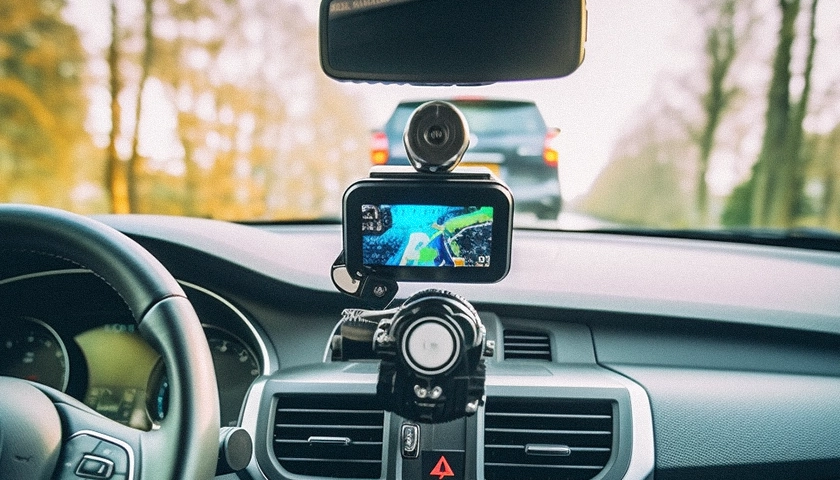
What features should a car camera have?
Dashcams offer a variety of useful features. Depending on the model, the offered options may vary slightly. When purchasing a car camera, however, it is worth paying attention to several key features that our dashcam should have.
G-sensor safety sensor
This sensor significantly affects safety while driving. It has 4 sensitivity levels, allowing it to detect shocks caused by collisions or sudden braking. After detecting such an event, the G-sensor automatically saves the current recording, thus protecting it from deletion and overwriting with another video. This eliminates the need for manual recording during a dangerous situation.Loop recording function
Loop recording means saving the newest video on the oldest one. This option saves memory space on the memory card, eliminating the risk of running out of free space when video recording is necessary. However, recordings protected by the G-sensor shock detection will not be overwritten or deleted. The user also has the option to manually save the recording as desired, which also protects it from deletion.Parking mode
The most difficult situation to determine the culprit is damage done in a parking lot, usually when we are not near our car. The solution to this problem is the parking mode in the dashcam. During the vehicle's parking, when the sensor detects even the slightest shock, a few seconds of recording are activated, providing us with evidence and helping to identify the perpetrator of the damage.WDR function
While driving, we encounter various weather conditions outside. Strong sunlight, rain, overcast weather, or driving at night affect the image recorded by the dashcam. When using a car camera, visibility of license plates is crucial because without it, we will not be able to determine the perpetrator of dangerous situations. Therefore, it is good for the dashcam to have the WDR function, which assists the device in changing lighting conditions. Imagine a situation where on a sunny day, we enter a tunnel where it suddenly gets darker, and after a moment, when leaving it, it immediately gets brighter. In such a case, the camera lens must adjust the amount of light needed immediately to ensure a clear image at all times.Automatic startup and motion detection
The last features that can affect the ease of use and ease of use of the car camera are automatic startup and motion detection. Automatic startup causes the camera to turn on automatically when power is supplied, i.e., when the engine is started. Motion detection starts video recording automatically when vehicle movement is detected. Almost all car cameras offered by the HDWR store have the above-described features.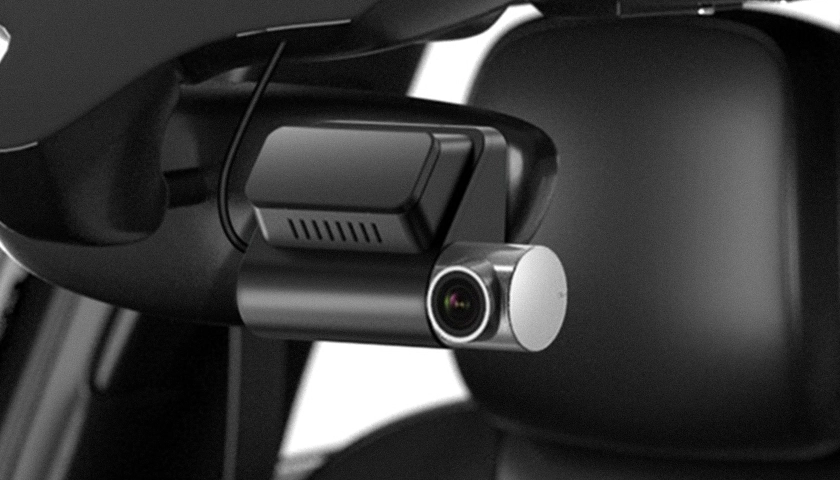
How to choose a car camera?
The market offers a wide range of dashcams for recording the course of a vehicle's journey. Choosing the right camera is primarily determined by the method of use and individual preferences. A camera offering two lenses will be ideal for taxi drivers because it allows simultaneous recording of the route ahead of the vehicle and what is happening inside the vehicle. This enhances safety and gives the driver a glimpse of what is happening in the car behind them. A standard camera that allows recording of events in front of the windshield will be suitable for almost any case for people wanting to feel safe while driving. On the market, you will also find front and rear dashcams, which, in addition to recording the route in front of the vehicle, have a rear camera that also records everything happening behind the car. Some models even allow the use of the rear camera as a reversing camera, which is particularly useful during parking maneuvers and reversing. To save space and increase visibility of the front windshield, a very good solution may be a dashcam in the rearview mirror, which is mounted on the rearview mirror. This gives us a dashcam recording the route and rearview mirror in one device.

50 or 60 Hz - which frequency to choose in the camera?
When browsing the menu of a car camera, each device allows you to choose the frequency between two values - 50 and 60 Hz. Before answering the question of which frequency is appropriate, we must delve into one of the media without which functioning in today's world is almost impossible. We are talking, of course, about electricity. Currently, in Europe, the supply of electricity is provided by the Continental European Power System, which is the world's largest synchronized system for transmitting electrical energy, consisting of power grids from 25 countries. And here we come to the most important point - throughout this system, electricity with a voltage of 230V and a frequency of 50 Hz is generated. This is a constant frequency used by many electrical devices. Regardless of which region we are in and regardless of where we are - in our homes, apartments, restaurants, or even outdoors - all electrical devices use the same 50 Hz frequency electricity. And this is the frequency that should be used in our car cameras. So why do dashcams have the option of choosing the frequency? 60 Hz is used in individual countries, such as the United States, Canada, Brazil, etc., and this option was introduced with them in mind. So the question remains, what will happen if we set the frequency to 60 Hz in our car camera? Apparently, nothing wrong will happen, and there will be no damage to the equipment, but it may happen, especially in night recordings, that the lights of street lamps, signals, etc., will appear to flicker. To eliminate this effect, you should set the camera to the frequency corresponding to the electricity used in a given country.
Clear Filters
Clear Filters
Camera type: front
Video resolutions: 1080p (1920x1080) 60 fps; 1080p (1920x1080) 30 fps; 720p (1280x720) 120 fps; 720p (1280x720) 60 fps; 720p (1280x720) 30 fps
Display: 1.5 inches; LTPS 4:3
Lens: 145-degree wide-angle, 6g, 1.8 aperture
Additionals features: WiFi communication with cell phone, GPS module displaying current speed and coordinates, built-in speaker and microphone
Camera Type: Front and Rear
Front Camera Video Resolutions: 4K Ultra HD (3840x2160), 1080p (1920x1080), 720p (1280x720); 30 fps
Rear Camera Video Resolutions: 1080p (1920 x 1080)
Display: 2,45 inches IPS
Additional functions: GPS module, WiFi communication with a mobile phone, built-in speaker, and microphone
€136.56
Camera type: Front and rear for rear view mirror
Video resolutions: Full HD (1920 x 1080), HD (1280 x 720)
Display: 4.7 inches, IPS LCD
Rear camera resolution: VGA (640 x 480)
Additional features: built-in speaker and microphone
Car cameras, also known as dashcams, are high-quality devices used for recording the course of a vehicle's journey. They are characterized by their small size and are ideal for use in both private and commercial vehicles. These compact devices are very useful in emergency situations as they can provide evidence to determine fault. Each car dashcam offers different features depending on the budget and needs and can be installed in various vehicles, including passenger cars, trucks, and even buses.
=LONG= Road Safety with Car Cameras
With the development of automotive technology over the years, the number of vehicles on the roads is increasing, leading to a higher risk of collisions and accidents. As drivers, we are exposed to various road incidents involving other road users on a daily basis. Driving along our route, we encounter not only other drivers but also motorcyclists, cyclists, and pedestrians. Such a large number of potential interactions brings the possibility of unpleasant and often disputed situations. It happens that determining the culprit during a collision is not always easy and obvious, especially if there were no eyewitnesses. In such situations, a car camera, also known as a dashcam, comes to the rescue. Employees spend an average of 8 hours a day at work, so their comfort and work environment are crucial. Technological advancements offer increasing opportunities to improve the comfort of employees, which translates into the efficiency and productivity of their work. There is yet another, most important factor that speaks for considering the topic of ergonomics at work - health reasons. Over the years, many studies have been conducted on how prolonged work at a computer in a certain position can negatively affect the health and well-being of our employees. Therefore, it is worth paying attention to whether the workstations in our company are ergonomic. Various solutions are available to enhance comfort.

What is the purpose of a car camera
A car dashcam is used to record the vehicle's journey. It is mounted on the front windshield using strong adhesive tape or a special suction cup and records all events on the road. Thus, in the event of a collision or road incident, the driver has evidence to help resolve disputed issues. Some car camera models, in addition to the front camera, also offer a rear camera, allowing recording not only of the route ahead but also capturing what happens behind the vehicle. Car cameras are characterized by compact, small size, which does not limit visibility while driving. They significantly enhance safety and have a range of useful features. Additionally, their operation is intuitive and straightforward.

What features should a car camera have?
Dashcams offer a variety of useful features. Depending on the model, the offered options may vary slightly. When purchasing a car camera, however, it is worth paying attention to several key features that our dashcam should have.
G-sensor safety sensor
This sensor significantly affects safety while driving. It has 4 sensitivity levels, allowing it to detect shocks caused by collisions or sudden braking. After detecting such an event, the G-sensor automatically saves the current recording, thus protecting it from deletion and overwriting with another video. This eliminates the need for manual recording during a dangerous situation.Loop recording function
Loop recording means saving the newest video on the oldest one. This option saves memory space on the memory card, eliminating the risk of running out of free space when video recording is necessary. However, recordings protected by the G-sensor shock detection will not be overwritten or deleted. The user also has the option to manually save the recording as desired, which also protects it from deletion.Parking mode
The most difficult situation to determine the culprit is damage done in a parking lot, usually when we are not near our car. The solution to this problem is the parking mode in the dashcam. During the vehicle's parking, when the sensor detects even the slightest shock, a few seconds of recording are activated, providing us with evidence and helping to identify the perpetrator of the damage.WDR function
While driving, we encounter various weather conditions outside. Strong sunlight, rain, overcast weather, or driving at night affect the image recorded by the dashcam. When using a car camera, visibility of license plates is crucial because without it, we will not be able to determine the perpetrator of dangerous situations. Therefore, it is good for the dashcam to have the WDR function, which assists the device in changing lighting conditions. Imagine a situation where on a sunny day, we enter a tunnel where it suddenly gets darker, and after a moment, when leaving it, it immediately gets brighter. In such a case, the camera lens must adjust the amount of light needed immediately to ensure a clear image at all times.Automatic startup and motion detection
The last features that can affect the ease of use and ease of use of the car camera are automatic startup and motion detection. Automatic startup causes the camera to turn on automatically when power is supplied, i.e., when the engine is started. Motion detection starts video recording automatically when vehicle movement is detected. Almost all car cameras offered by the HDWR store have the above-described features.
How to choose a car camera?
The market offers a wide range of dashcams for recording the course of a vehicle's journey. Choosing the right camera is primarily determined by the method of use and individual preferences. A camera offering two lenses will be ideal for taxi drivers because it allows simultaneous recording of the route ahead of the vehicle and what is happening inside the vehicle. This enhances safety and gives the driver a glimpse of what is happening in the car behind them. A standard camera that allows recording of events in front of the windshield will be suitable for almost any case for people wanting to feel safe while driving. On the market, you will also find front and rear dashcams, which, in addition to recording the route in front of the vehicle, have a rear camera that also records everything happening behind the car. Some models even allow the use of the rear camera as a reversing camera, which is particularly useful during parking maneuvers and reversing. To save space and increase visibility of the front windshield, a very good solution may be a dashcam in the rearview mirror, which is mounted on the rearview mirror. This gives us a dashcam recording the route and rearview mirror in one device.

50 or 60 Hz - which frequency to choose in the camera?
When browsing the menu of a car camera, each device allows you to choose the frequency between two values - 50 and 60 Hz. Before answering the question of which frequency is appropriate, we must delve into one of the media without which functioning in today's world is almost impossible. We are talking, of course, about electricity. Currently, in Europe, the supply of electricity is provided by the Continental European Power System, which is the world's largest synchronized system for transmitting electrical energy, consisting of power grids from 25 countries. And here we come to the most important point - throughout this system, electricity with a voltage of 230V and a frequency of 50 Hz is generated. This is a constant frequency used by many electrical devices. Regardless of which region we are in and regardless of where we are - in our homes, apartments, restaurants, or even outdoors - all electrical devices use the same 50 Hz frequency electricity. And this is the frequency that should be used in our car cameras. So why do dashcams have the option of choosing the frequency? 60 Hz is used in individual countries, such as the United States, Canada, Brazil, etc., and this option was introduced with them in mind. So the question remains, what will happen if we set the frequency to 60 Hz in our car camera? Apparently, nothing wrong will happen, and there will be no damage to the equipment, but it may happen, especially in night recordings, that the lights of street lamps, signals, etc., will appear to flicker. To eliminate this effect, you should set the camera to the frequency corresponding to the electricity used in a given country.

